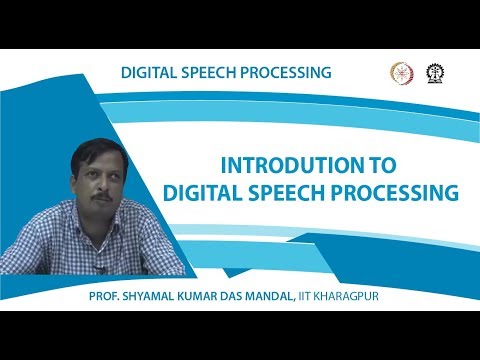Description:
COURSE OUTLINE: Oral Speech may be the most natural, common and direct mode of human communication. Since the middle of the last century, Speech has become an area of intense and active research and development (R&D) to become a prime means of direct HumanComputer Interactions (HCI). The pace of such R&D as further got boosted with the general abundance of cheap computing power in the form of PC, PDA or Mobile Handset. While man to machine in speech mode is yet to reach the minimum threshold level for widespread deployment, spoken messages directly by machine. This needs research in speech science and the development of speech technology. The course provides the foundation knowledge on speech production and perception along with the processing of speech signals in the digital domain.

Digital Speech Processing
Add to list